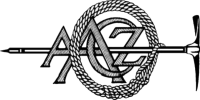- Home
- Nepal
- Adventure Activities
- Peak Climbing
- Mountain Expedition
- Local Tours
- Sirubari Village Homestay
- Ghale Gaun
- Kalinchowk Tour
- Halesi Mahadev - Maratika Cave package
- Chitwan Jungle Safari
- Day tour in Kirtipur
- Day tour in Kathmandu City
- Spiritual Tour to Muktinath
- Chitlang and Kulekhani
- Bardiya National Park
- Jeep Tour to Rara Lake
- Gosaikunda Lake
- Manakamana day Tour with cable-car ride
- 4WD Jeep Tour to Upper Mustang
- Family Holidays
- Heli & Mountain Flights
- Trekking Routes
- Kailash Mansarovar
- Bhutan
- Tibet
- Multi Country
- Domestic Flights
- Contact
- Home
- Nepal
- Adventure Activities
- Peak Climbing
- Mountain Expedition
- Local Tours
- Sirubari Village Homestay
- Ghale Gaun
- Kalinchowk Tour
- Halesi Mahadev - Maratika Cave package
- Chitwan Jungle Safari
- Day tour in Kirtipur
- Day tour in Kathmandu City
- Spiritual Tour to Muktinath
- Chitlang and Kulekhani
- Bardiya National Park
- Jeep Tour to Rara Lake
- Gosaikunda Lake
- Manakamana day Tour with cable-car ride
- 4WD Jeep Tour to Upper Mustang
- Family Holidays
- Heli & Mountain Flights
- Trekking Routes
- Kailash Mansarovar
- Bhutan
- Tibet
- Multi Country
- Domestic Flights
- Contact
Dolpo and Mugu (Great Himalayan Trail)
An exciting Trekking experience
Trip Highlights:
- Very demanding pioneer trekking
- Fantastic mountain lakes Phoksundo and Rara
- Ancient Bon and Buddhist monasteries
- Four high passes above 5000m
Upper Dolpo Mugu Rara Trek (Dolpo to Mugu Trek)is an exotic and enthralling path, a bit strenuous trek is a part of Great Himalayan Trail. Upper Dolpo Mugu Rara Trek (Dolpo to Mugu Trek) takes you from the barren landscape of Dolpo, via Shey Gompa crossing the high passes of nestling Himalayan range to the alpine forest of Rara National Park. This trek is not well-known commercially, as a result only a few groups are approaching ahead through this trail. Navigating of two stunning and breathtaking lakes Phoksundo and Rara is one of the major highlights of Upper Dolpo Rara trek.
2 - 18
Detailed Itinerary
- Day 01: Kathmandu (1350m):
After arrival in Kathmandu airport, we will transfer you to the hotel. - Day 02: Fly to Nepalgunj.
in the afternoon, we take a short flight to Nepalgunj in the lowland Terrai region. - Day 03: Fly to Juphal and trek to Rupghat (2050m).
We have an early morning flight to Juphal for 40 minutes. After reaching juphal, we will have a lunch. Then we start our trek towards Rupghat. we trek downhill to the river and our first night's camp at Rupghat (2050m). - Day 04: Trek to Chepka (2850m), crossing the tributary Anke Khola.
There are scattered villages along the route including the deserted crude stone houses of Jyalhasa where we take our lunch. After lunch we cross the Anke Khola and it can be quite hot as we make our way up the river to our campsite at Chepka (2850m). - Day 05: Trek to Renje (2940m) and overnight at the village of Samduwa (3085m).
At one point the trail climbs steadily for an hour or more to bring us out of the forest and into flower-strewn meadows. Eventually the valley opens up a little and the going becomes easier until we reach a bridge leading to several houses which make up the village of Renje. Beyond here the valley narrows once more and the trail continues to climb and descend as we negotiate spurs of the steep hillside. We cross to the west bank and reach the village of Samduwa (3085m) where we make camp. - Day 06: Trek to Palam and Ringmo and on to Phoksumdo Lake (3600m).
We pass Palam. Descending steeply through the forest we then climb steadily to reach the charming Dolpo settlement of Ringmo.Just below the village we cross the river and follow it to the lake where we set up camp at an elevation of around 3600 metres. - Day 07:Acclimatisation day at Phoksumdo Lake.
It is necessary to spend a day here to give our bodies’ time to acclimatise to the new altitude. This will also be a welcome rest after the last few days of trekking and a chance to catch up on laundry. There are various options for excursions in this fantastic location and a visit to Ringmo and its overlooking monastery is a must. - Day 08:Trek the spectacular lakeside trail to a ridge at 4000 metres, then descend to camp north of the lake.
We start our trek to Shey Gompa in Inner Dolpo with a spectacular trail around the western end of the lake. After this high traverse, the trail climbs to a ridge giving spectacular views over the lake, the dark green forest, and the bright fields of Ringmo with the snow peak of Kang Norbu to the south. - Day 09:Trek to Snowfields Camp (4600m) at the foot of the Kang La.
After 20 or 30 minutes we leave the main valley and head north again entering a narrow gorge. We have a long climb, often with no trace of any trail as we progress up the steep sided valley, passing occasional grazing areas and crossing several side streams. - Day 10: Cross the Kang La (5350m) into Inner Dolpo and Shey Gompa (4370m).
We make a steep descent of around 45 minutes to the valley floor and follow the river easily for further 3 hours to reach Shey Gompa, the entrance of which is marked by a red and white chorten and snaking lines of mani stones.We set up our camp just below the gompa in a meadow containing a few herders’ huts. - Day 11: A day for rest and exploration at Shey Gompa.
Today is a rest day at Shey-Gompa. A worthwhile side trip is to visit the amazing Kagyupa monastery of Tsa Kang which is perched on a narrow ledge high on a cliff face. To get there we have to climb part way on the trail which pilgrims follow to make the 'Kora' or circuit of the Crystal Mountain. - Day 12: Trek to Samling Monastery (4120m) or camp at Tora before Samling.
Our trail heads north from Shey Gompa, cutting up the hillside on the east side of the Tartan Khola and skirting around at the head of a tributary valley to a high grazing area near the Den La. Following a broad stock trail across the open hillside, we drop down to Tora where the people from Bhijer graze their yaks in the summer. Depending on how long it has taken to get here, we could set up camp at Tora(4500m) or drop down to Samling Monastery (4120m). - Day 13: Samling Monastery and trek to Bhijer (3850m).
Established in the 8th century, Samling is the oldest Bon Gompa in Dolpo. Its several white and brick-red buildings and chortens are scattered across a grassy slope and adorned with prayer flags. We will spend some time looking around and hopefully meet one or two of the monks who live here. From Samling it's just a short walk to the village of Bhijer (3850m), a pleasant, welcoming and very 'Tibetan' village which sees very few trekkers. The house at Bhijer typically have an upper living space with the ground floor being used to shelter animals at night. The village has an open,sunny location and there's lots to see and do here. Look out for the local women doing their spinning, watch the barley harvest or visit the gompa. There is also a simple school, shop and a health post. This is the last place where the cook team may be able to purchase some fresh vegetables before reaching Mugu. - Day 14: Cross the Yambur La (4800m) and descend to the Tora Khola (3400m).
Leaving Bhijer and heading north again, the first obstacle we are faced with is the Yambur La (4800m). It's a pretty abrupt climb on a zig-zagging trail which is likely to take us 4 hours. Look out for the wild blue sheep (bharal) which are not uncommon in this area. Look out also for the deep blue gentians that grow alongside the trail. Beyond the pass, we'll drop down through the remains of the long-deserted village of Potal and continue descending steeply for another hour to the Tora Khola (3400m). It's warmer down here and there's just about room to camp close to the old wooden cantilever bridge. - Day 15: A short trek to Pho (4020m). Afternoon free.
Just a short stage today; we'll aim to reach camp at Pho in the late morning and have lunch there. We head downstream (north) for about half an hour and then turn to head westwards and steeply uphill to the small village of Pho (4020m) which may be the most remote settlement Nepal. Few people live here now and there are signs that the numbers are dwindling. Some of the fields on the edge of the village are eroded and no longer maintained. Nevertheless, Pho is a good place to make camp with level pitches and a clean and plentiful water supply. - Day 16: Trek to a high camp (4900m) before the Nyingma Gyanzen La.
Leaving Pho and heading west, then north, we have a steep climb for 2 to 3 hours on a yak trail which leads up to a mani (prayer) wall; a good place to take a break.Once again, we are likely to see lots of blue sheep on this part of our route. We then have a similar, if slightly less steep, continuation of the day's walk up to our high camp at 4900 metres below the Nyingma Gyanzen La. This is a potentially cold and exposed place, but the vast panorama southwards to the numerous 6000 to 6800 metre snow-peaks of the KanjirobaHimal more than make up for that. There are no more villages until we reach the Mugu Khola, several days away, and there is a real feeling of being 'out there'. - Day 17: Cross the Nyingma Gyanzen La (5500m) to the Swaksa Khola.
This will be a long and challenging but exciting day which starts out with a slow, grinding ascent of 2 to 3 hours up to the crest of one of the highest ridges in the area, marked by a couple of cairns and a few wind-tattered prayer flags at the Nyingma Gyanzen La (5500m). It feels like an achievement to reach this remote pass which has so far seen very few trekkers. It's another fantastic viewpoint; to the south are the snow covered Kanjirobas and to the north a multitude of unnamed peaks on the border between Nepal and Tibet. If we're lucky we might share the trail with traders and their amazing yaks which are the 'heavy goods vehicles' of the high Himalayas. We'll find a spot out of the wind to eat lunch before making the long, long descent to the Swaksa Khola (4500m). - Day 18: Cross the Yala La (5250m) to either the Marjung Khola or the Chyandi Khola (4800m).
The route initially takes us alongside the Swaksa Khola and we can look out for the hoof marks of blue sheep and the pug marks of snow leopards in the sand beside the stream. We then turn left out of the valley and make a long and sustained ascent across a grassy hillside to the Yala La (5250m) which we reach after about 3 hours. We reach our camp in the valley at an elevation of around 4800 metres in the late afternoon. - Day 19: Descend the Chyandi Khola to a junction with the Takla Khola (3750m).
Today is a long and challenging day as we descend the Chyandi Khola. There is no well-made path and we have to negotiate a lot of difficult terrain, possibly including the use of a safety rope on some short sections.Equally, we will have to climb up above the river at times to find the best route and this will involve contouring on a poor trail for extended periods, before a final zig-zagging descent through ancient birch forest to the junction with the Takla Khola. A final river crossing on a log bridge before our arrival at camp. - Day 20: Cross the Chyargo La (5100m) and descend to Thajuchaur (4000m).
Another long day, initially trekking to Chyargo La Phedi at 4300 metres and then steadily upwards to the cairn-marked Chyargo La (5100m), which we reach after around 5 hours. This is a bleak and rocky place but with amazing views which provide a great overview of some of the geography we have been travelling through over recent days. A long descent then takes us into a gorge-like valley where the route becomes more tenuous again, with a mix of thick forest and several river crossings to negotiate. There is a place to camp at Thajuchaur at around 4000 metres elevation. - Day 21: Trek to the Mugu River then up-valley to Mugu (3400m).
Here,we meet the main trail that links Rara Lake to the south with the village of Mugu and Tibet to the north. The Great Himalaya Trail heads south from here,but we turn north (on the good trail) to Mugu which is about 3 hours away. Arriving at Mugu (3400m),we set up camp on the broad, flat valley floor immediately below the village. - Day 22: Rest day at Mugu. Or a contingency day.
The people of Mugu see few outside visitors and have very little connection with the region of Upper Dolpo where we started our trek. Their trade and cultural connections are northwards into Tibet and the border is opened by the Chinese in August to facilitate trading. There is even a 4WD road link which starts a few kilometres beyond Mugu and runs northwards into Tibet. If we have managed to keep to our schedule, this will be a free day to chill-out, eat, wash, spend time with the Mugu villagers or take a short walk northwards on the main trail. We spend a second night at Mugu. - Day 23: Trek to Pulu or Riusa (2250m).
We have 3 days to trek to the airport at Talcha just to the east of Rara Lake and for the whole of this journey we will be on reasonably good trails that link the villages in the valley of the Mugu Karnali. On this first day we descend steadily to the confluence of the Mugu with the NamlangNadi at Tyar and continue westwards for a further hour or two to a camping place beside the river below one of two villages, either Pulu or a little further on, Riusa. - Day 24: Trek via Mangri to Kumpha (2010m).
we'll have good opportunity to interact with the local people that we meet on the trail. We pass through the settlement of Mangri. Now, we continue beside the Mugu Karnali through the village of Chhaila to a camping place close to Kumpha (2010m). - Day 25: Trek through Gamgadhi (2200m) to Talcha Airport (2750m).
We'll have an early start on this final day of trekking with the aim to reach Gamgadhi in time.After lunch, there's a steady climb up to Talcha where we set up our final camp. - Day 26: Fly to Nepalgunj and onward fly to Kathmandu.
Today you will fly back Nepalgunj early morning and onward fly to Kathmandu with lots of memories and good photos you click on your trip. - Day 27: Free day in Kathmandu
Today, you have a free day in Kathmandu. You will either rest and do some shopping around Thamel or have some sightseeing around kathmandu valley. - Day 28: Departure Day.
Today you are leaving Nepal. we will drop you to the Kathmandu international airport 3 hours before your flight.
This trip can be redesigned or redeveloped as per your taste, For more information please e-mail us at This email address is being protected from spambots. You need JavaScript enabled to view it.
Cost and dates
We do small group trek or private trip as your request.
For quick information / contact us at whatsapp/viber + 977 9841815039
Or Drop us inquiry at This email address is being protected from spambots. You need JavaScript enabled to view it.
Frequently Asked Questions
Some places might have western food available but most of them have local Nepali food. Daal and Rice, seasonal vegetable with pickles.
Spring Water is the common means of cooking and drinking. We recommend you to carry chlorine tablets to purify the water and suggest drinking boiled water wherever possible. Bottled mineral water is also available in small shops.
Please be very free to bring all the gears you required for the trek if you are comfortable bringing it.
Warm, waterproof, non-slippery, & comfortable trekking shoes is highly recommended for the trek whereas any shoes of your choice goes well in the cities.
Big cities like Kathmandu and Pokhara have lots of trekking stores where you can buy any type of gears. There are also dedicated stores in Kathmandu and Pokhara which only rent gears required for trekking in a very reasonable price
Not at all. Meals, accommodation and transportation while on the trek is all inclusive.
It all depends on the group size. A porter for couple of people and a guide for a group size of 6 is the standard rule of Himalayan Trekkers.
- Take permission before taking photos.
- Avoid wearing revealing clothes and avoid outward displays of physical affection.
- Do not disturb wildlife.
- Do not damage or remove any plants.
- Do not purchase animal part and antique.
Bank wire transfe, credits cards,visa card and cash payments are our gateway of making payments.
Your feedback either negative or positive is what keeps us motivated moving forward. So we suggest you to gives us your valuable comments.
Visit us
-
JP Marga, Thamel, Kathmandu, Nepal
-
+977-01-5365371
-
+977 98418-15039
(Whats App, Viber & Telegram)








